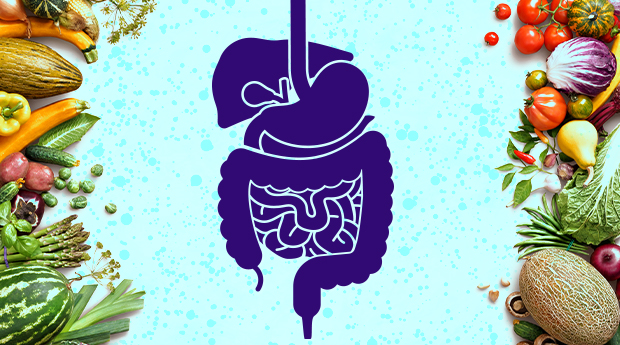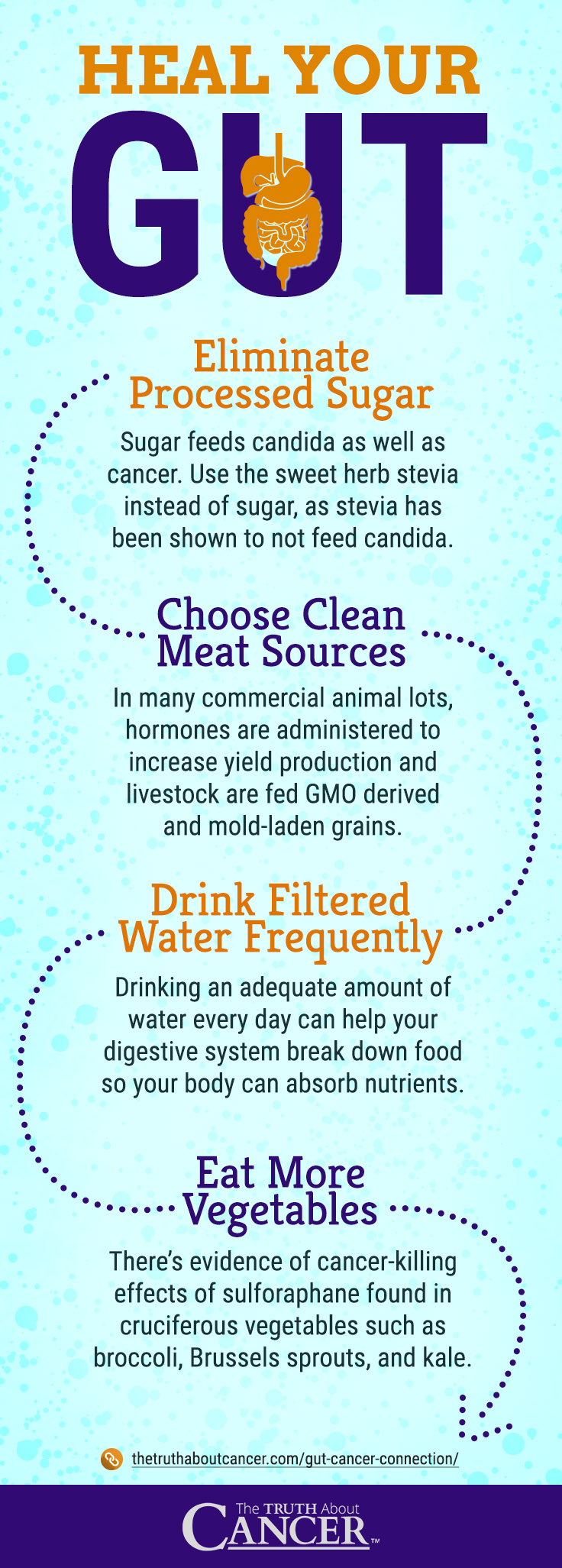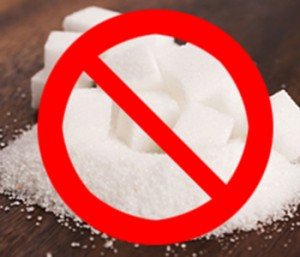Imagine your doctor, or even your oncologist, telling you the following: “The first thing we need to do is make sure you have a healthy GI tract because this is where your body has the ability to begin to heal itself. You see, creating a healthy gastrointestinal system is the foundation for a healthy body and immune system.”
This is what every patient needs to hear from their doctor because this is absolutely true. Your amazing gastrointestinal (or GI) tract contains over a billion nerve endings. It’s where the majority of nutrients are absorbed, and is where over two dozen hormonal interactions occur. In the tissues of the gastrointestinal system lining is also where 60% to 80% of the body’s immune cells reside. Sadly, few physicians say a word about the significance of a healthy digestive system as a foundation for health and healing.
Digestion 101
Digestion begins in the mouth. With that very first chew, the enzyme amylase, found in the saliva, is released. This starts the breakdown of starches and other food components. Next, food goes down the esophagus into the stomach where, in a healthy digestive system, powerful acids and enzymes such as pepsin break food down further.
The stomach also acts as a storage facility so that partially digested food can enter the small intestine, via the pyloric valve, in just the right amounts.
Once in the small intestine, bile from the liver and digestive enzymes from the pancreas break down substances even more. This is also where absorption of most of the nutrients and minerals from the food we eat occurs via tiny hair-like projections called villi and microvilli. Most importantly, the small intestine is where the majority of the body’s immune cells are housed.
The large intestine (or colon) is the last area of the digestive system and thus subject to the most toxic build-up. This two-foot-long tube is responsible for water absorption and the excretion of waste from the body. The colon is one of the most diseased organs in the body for most people, in large part because of hurried, stressed-out, and fast food-focused lifestyles.
2 Ways Stress Impacts Your Digestive System
Initial stress can occur at any point along the digestive journey, from chewing to elimination:
- In the mout
h, “bolting” or not chewing food thoroughly can lead to malnutrition and non-absorption of nutrients.
- In the stomach, the proper amount of acid is important for many vital functions. Stomach acid is comprised mostly of hydrochloric acid (HCL) as well as potassium and sodium chloride. These substances are essential for the digestion of proteins and the destruction of bacteria that exists in protein-rich foods such as meats and in commercially processed items. The absorption of vitamins such as B12 (vital for nervous system function) is also dependent on healthy stomach acid.
Approximately 10% to 15% of the American population has a condition called hypochlorhydria, or low stomach acid. (50% of Americans over the age of 60 have the condition). Although the direct cause of hypochlorhydia is not known, individuals who adhere to the Standard American Diet (SAD) will experience a gradual decrease in stomach acid over time. Acid imbalance in the stomach can lead to chronic fatigue, thyroid disorders, chronic hepatitis, and autoimmune disease, among other conditions.
Symptoms of hypochlorhydria are hard to pinpoint, since they vary and sometimes mimic those of high stomach acid, such as indigestion. Frequent belching, gas, and the presence of undigested protein fibers in the stool are common indicators, as is the feeling of being constantly hungry (malabsorption of nutrients can trigger the body’s signals for more food).
- In the small intestine, many people do not produce enough pancreatic or liver enzyme in order to break down proteins in a timely manner. Furthermore, food toxins such as preservatives, gluten, dough conditioners in wheat products, pesticide residue, artificial additives, and refined sugar can lead to weak small intestine function and bad bacterial overgrowth.
Leaky gut or “intestinal permeability,” currently accounts for close to 50% of chronic complaints in the U.S. Leaky gut begins in the “tight junction” of the small intestine. As a result of inflammation, these junctions can slowly break apart, allowing large food particles containing toxins and microbes to “leak” into the bloodstream.
In addition to infection and the overuse (defined as the on-going use over months or years) of conventional medications such as antibiotics, gluten intolerance can also contribute to this condition. Gluten can sometimes cause cells in the gut to release zonulin, a protein that can contribute to tight junction breakdown. Leaky gut has been connected in some studies to various autoimmune conditions and even autism.
- The large intestine has perhaps the most susceptibility to toxic overload when not properly cared for. If waste matter sits in the colon as a result of constipation, for example, then the resulting toxins can be re-absorbed into the body.
In contrast to toxic bacteria, there are hundreds of species of beneficial bacteria that live in the colon; many of them perform vital functions for overall health, such as the production of Vitamin K and Biotin. These bacterium also stimulate the release of hormones that help in the proper storage of fats and the regulation of moods. Some scientists have called the neuro-gastric connection the “second brain.”
Signs of an Unhealthy Gastrointestinal System
Disorders and imbalances in the GI tract can affect your entire body. The obvious signs of an unhealthy gastrointestinal system are:
- gas
- bloating
- heartburn/acid reflux
- diarrhea
- constipation
- irritable bowel syndrome
That being said, if a digestive disorder has gone on for a while, everything from low energy, muscle fatigue, and “just feeling off” to diagnosed degenerative disorders and chronic infections could have its origins in the digestive system.
High antibiotic use, high sugar intake, and chronic stress can also lead to a proliferation of “bad” bacteria along the entire GI tract. The most common (as well as the most dangerous) of which is candida albicans. Candida is a fungus that feeds on sugar and waste products left behind from the digestive process.
According to research conducted by Rice University, an estimated 70% of Americans are affected by candida. Candida is a systemic organism; it may start out in the gut but, if left unchecked, it can soon spread to all organs of the body. According to Dr. Andrew Koh of the Department of Pediatrics and Microbiology at UT Southwest Medical Center, if a patient has a Candida infection in addition to cancer, the fatality rate is roughly 30%.
Donna Gates of Body Ecology has an excellent self-quiz that you can take to determine if you are at risk for candida. Eradicating candida from your body can be difficult, but not impossible. In the last section of this article you’ll find more information about simple steps you can take for overall digestive health.
These steps will gently help reduce candida colonies in the GI tract as well as restore beneficial flora that may have been eliminated through high antibiotic use. The Body Ecology website is also an excellent resource for protocols and products that help to deal with these issues.
The Connection Between Cancer and Digestive System Imbalance
A weakened GI tract leads to a weakened immune system, plain and simple. A weakened immune system can open the floodgates to a domino effect of diseases, including cancer.
The direct connection between toxic build-up in the colon and colon cancer is clear. There are approximately 90 thousand new cases of colorectal cancer each year and close to 50 thousand deaths. This high number makes sense in relation to the number of people who do not take proper care of their colon. Remember that cancer thrives in an acidic environment. Increased acidity in the colon caused by toxic buildup creates a perfect environment for cancer cells to flourish.
Toxins in the GI tract can also lead to autoimmune disease, which has been directly linked to cancer. A 1998 study reported that lupus patients had twice the risk of getting cancer than non-lupus patients. A 2012 study sponsored by the University of North Carolina, Charlotte drew the same results between autoimmune arthritis and breast cancer.
V.E. Irons, a respected nutritionist, identified over 20 carcinogenic chemicals that are created as a result of toxic build-up, specifically in the colon. In addition, as the body becomes increasingly toxic, healthy oxidation cannot take place and cells become stressed, which compromises the immune system. Thus the downward spiral that could lead to cancer begins.
Sadly, conventional doctors completely ignore repairing this important organ system that could do so much to help their patients heal from cancer and other diseases.
6 Steps to a Healthy Gastrointestinal System
Step #1: Eat Gut-Healthy Food
Probably the most important thing you can do to improve your GI tract is to eat for your digestive health. Of course, everyone is different, so dietary specifics will vary for each individual. Remember that food intolerances of any kind are signs of inflammation. Consider going on an elimination diet to determine what foods, if any, may be causing inflammation. If possible, work with a nutritionist or functional medicine doctor who can walk you through the steps. If you decide to do it on your own, one diet I recommend is outlined in the book The Plan by Lyn-Genet Recitas. Her protocol is based on weight gain as a sign of inflammatory response.
In general, the following guidelines are a good place to begin healing your GI tract:
- Elim
inate processed sugar: The average American consumes about 150 to 170 pounds of sugar per year. Sugar feeds candida as well as cancer. Use the sweet herb stevia instead of sugar, as stevia has been shown to not feed candida. Stevia comes in liquid or powder form or you can buy fresh at your farmer’s market or health food store when available.
- If you eat meat, make sure it is organic, grass-fed, and hormone-free. A recent study conducted by the Environmental Working Group (EWG) discovered that 69% of commercial pork, 55% of beef, 39% of chicken, and a whopping 81% of turkey tested positive for antibiotic-resistant bacteria such as campylobacter and Salmonella.
The case for going organic becomes a no-brainer when you also consider the fact that, in many commercial animal lots, hormones are deliberately administered to increase yield production and livestock are fed GMO derived and mold-laden grains. It is also important to note that scientific evidence directly links high meat consumption with increased risk of colorectal cancer.
- Drink plenty of filtered water between meals: Our bodies are made of up to 70% water. Drinking an adequate amount of water every day can help your digestive system break down food so your body can absorb nutrients. One way to calculate how much you should be drinking is to divide your current weight in half – that is the number of ounces of water you need to drink per day. If you are physically active that day, you will likely need to drink more.
It is important to note that drinking too much alkaline water (more than 1 to 2 quarts a day) over a long period of time may diminish the acid content of the stomach, could lead to less nutrient absorption, and, because of its antibacterial properties, could possibly upset the delicate balance of good bacteria in your digestive system.
- Increase your intake of green, leafy, and cruciferous vegetables: Scientists have long known about the cancer-killing effects of sulforaphane found in cruciferous vegetables such as broccoli, Brussels sprouts, and kale. New research points to how eating these kinds of veggies may also benefit healthy digestive system/immune system interactions. Proteins from cruciferous vegetables are already known to switch on “T-bet” genes. Researchers in Australia have now connected these genes to the production of lymphoids, immune system cells which are designed to keep bad digestive bacteria at bay.
- Avoid genetically-engineered (GMO) foods: In May 2014, the American Academy of Environmental Medicine (AAEM) expressed their concerns about GMOs, citing studies which showed altered liver function and intestinal damage as well as increased cell growth and immune system deficiencies.
There is just too much that we still do not know about the effects of GMO foods. I recommend taking the safe route. On packaged foods, look for the GMO-free label whenever possible.
- Add fermented foods to your diet: Consuming fermented foods such as coconut kefir, organic kimchee, cultured vegetables, or kombucha every day will strengthen the gut and improve digestion and immune function overall. Watch this great video by Charlene on how to make delicious homemade raw sauerkraut.
Step #2: Heal Your Gut with Probiotics
As mentioned above, your small and large intestines are the home to both good and bad bacteria. Probiotics literally means “for life.” This is because probiotics protect your digestive system from opportunistic viruses, parasites, and other bacterium.
Russian scientist Ilya Metchnikoff suggested over one hundred years ago that disease is directly related to unhealthy bacteria in the GI tract. Since then, modern science has shown that improving intestinal flora can counter the effects of unhealthy bacteria and the substances they produce.
I recommend saturating your system with healthy flora through the use of at least 50 billion CFUs of probiotics per day. For some populations, such as the elderly, children, and those with compromised immune systems, taking too many probiotics may overstimulate the immune system and lead to metabolic imbalances. If you are unsure, consult with your natural health professional before beginning a probiotic regimen.
Step #3: Supplement with Hydrochloric Acid (HCL) and Pancreatic Enzymes
As counter-intuitive as it may sound, supplementing with Betaine HCL (Betaine is an amino acid added for delivery purposes) supports healthy digestion, even for people who have “acid reflux.” People who suffer from acid reflux often do not have enough stomach acid. Therefore, food churns in the gut rather than being released into the small intestine. Take 1 capsule of 600 mg Betaine HCL with meals, increasing the amount to two per meal as your constitution allows if there is no improvement in digestion.
In addition to HCL supplementation, for digestive maintenance purposes only, the average person can take one to two plant or animal-based pancreatic enzymes with meals (up to 20 enzymes per day).
Enzyme therapy itself has been used for over one hundred years as a modality to heal various diseases, including cancer. Dr. John Beard, an embryologist in the early 1900s, discovered that placental cells (like cancer cells) invade healthy tissue, create their own blood supply, and replicate very quickly. He also noticed, quite miraculously, that on day 56 of embryonic growth, the placenta stopped growing as the fetus began secreting large amounts of pancreatic enzymes on that very day!
It’s important to note that although plant-based enzymes can help greatly in digestion, they do not kill cancer cells. For a cancer protocol, pancreatic enzymes must be from a swine source since the pancreas of a pig is most similar to a human pancreas.
As someone who has overcome breast cancer, I use the enzymes recommended by the late Dr. Nicholas Gonzales. The best source of pancreatic enzymes is found in New Zealand because of the clean processing policies and overall environment that country sustains.
Step #4: Add a Fasting Regimen to Your Routine
A study published in the journal Cell Stem Cell demonstrated that a 72-hour fast can protect the immune system from damage and can lead to immune system regeneration. In addition, according to animal models, fasting can extend life-expectancy as well as reduce inflammation and cancer promotion. Calorie restriction and intermittent fasting has been proven to slow the growth of primary tumors.

Step #5: Get the Gunk Out through Detoxing Colonics and Enemas
You can reduce the build-up of poisonous chemicals in your GI tract through the use of regular colonic irrigations and at-home enemas. The frequency of these depends on your individual physiology and needs. A conservative way to begin is to start with one enema per week, using either 4 ounces (118 ml) of aloe vera juice concentrate or the juice of 1 to 2 lemons in 1 to 2 quarts (1.14 liters) of warm distilled water for a gentle flush. You can also do a liver-cleansing coffee enema, using 2 heaping tablespoons of organic coffee steeped in 1.5 pints (710 ml) of filtered water.
Colonics are administered by a trained colon hydrotherapist and involve an infusion of sterile water into the rectum. There are two types of colonic procedures – open and closed. With an open system, the patient begins the procedure themselves by positioning themselves onto the speculum to begin the flush. With a closed system, the colon hydrotherapist is involved for the entire procedure.
For general maintenance, a series of three colonics in coordination with an overall seasonal cleanse is a good place to start. Colonics are not recommended for individuals with certain conditions such as diverticular disease, Crohn’s, severe hemorrhoids, congestive heart failure, or severe anemia.
After receiving a series of colonic irrigations, many people are shocked to see the dark toxic film that had been sitting in their colon. They also notice the immediate effect in terms of increased energy and vitality. Check with your alternative health professional to find out more about colonics and to get a recommendation for a qualified colon hydrotherapist in your area.
Step #6: Use Silver and Aloe to Heal the Gut Quickly
Finally, Dr. Robert Scott Bell has developed a simple yet very effective, short-term protocol that uses silver and aloe to eradicate bad bacteria from the gut. This “shot” helps to “down-regulate inflammation and up-regulate the healing of tissue” in the intestinal lining. For detailed information about this protocol, please watch Dr. Bell’s informative video here.
Remember, healthy digestion equals better nutrient absorption, a stronger immune system and a more vibrant body. It is an essential part of any cancer prevention and healing protocol.
Article Summary
60% to 80% of the body’s immune cells reside in the tissues of the gastrointestinal system lining.
Two ways stress impacts your digestive system: in the mouth and in the stomach.
Leaky gut or “intestinal permeability,” currently accounts for close to 50% of chronic complaints in the U.S.
In addition to infection and the overuse of conventional medications such as antibiotics, gluten intolerance can also contribute to this condition.
The obvious signs of an unhealthy gastrointestinal system are:
- Gas
- Bloating
- Heartburn/acid reflux
- Diarrhea
- Constipation
- Irritable bowel syndrome
Increased acidity in the colon caused by toxic buildup creates a perfect environment for cancer cells to flourish.
6 steps to a healthy gastrointestinal system:
- Eat gut-healthy food
- Heal your gut with probiotics
- Supplement with hydrochloric acid (HCL) and pancreatic enzymes
- Add a fasting regimen to your routine
- Get the gunk out through detoxing colonics and enemas
- Use silver and aloe to heal the gut quickly











 h, “bolting” or not chewing food thoroughly can lead to malnutrition and non-absorption of nutrients.
h, “bolting” or not chewing food thoroughly can lead to malnutrition and non-absorption of nutrients.
 inate processed sugar: The average American consumes about 150 to 170 pounds of sugar per year. Sugar feeds candida as well as cancer. Use the sweet herb stevia instead of sugar, as stevia has been shown to not feed candida. Stevia comes in liquid or powder form or you can buy fresh at your farmer’s market or health food store when available.
inate processed sugar: The average American consumes about 150 to 170 pounds of sugar per year. Sugar feeds candida as well as cancer. Use the sweet herb stevia instead of sugar, as stevia has been shown to not feed candida. Stevia comes in liquid or powder form or you can buy fresh at your farmer’s market or health food store when available.







Oh no! I am concerned that if I were to contract hypochlorhydria, I can get chronic fatigue, thyroid disorders, and autoimmune disease. Knowing this, I would be sure that I should get my digestion system checked with a medical professional. Not only will I be able to know whether my stomach is healthy but also ask of what should my diet contain in order to keep it healthy.
I always drink water with half a squeezed lemon to help me clear my intestines.